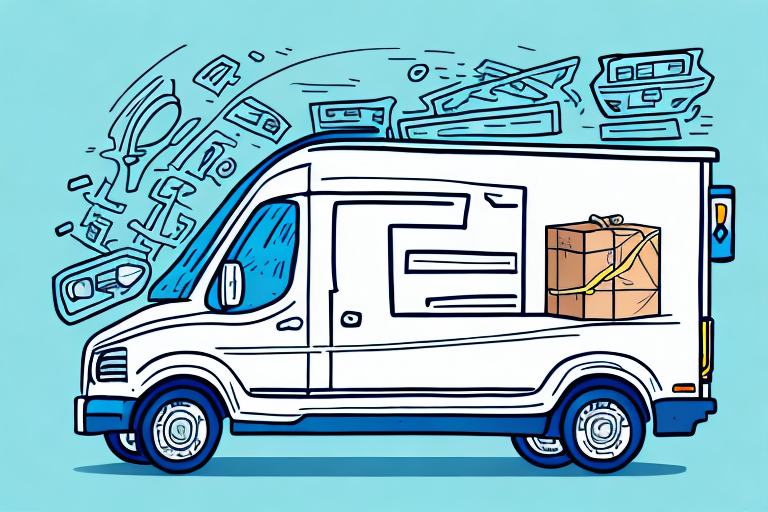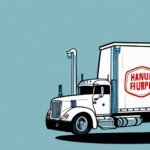How Much Should You Charge Per Mile for Delivery Services?
Running a delivery business requires careful pricing strategies to ensure profitability and competitiveness. Determining the right rate per mile is crucial for your success. This comprehensive guide explores various factors and strategies to help you set optimal delivery pricing.
Factors to Consider When Setting Your Delivery Rates
Several factors influence the per-mile charge for delivery services. Understanding these can help you set competitive and fair rates:
- Size and Weight of Items: Heavier or bulkier items can increase costs due to the need for more fuel or special handling equipment.
- Distance: The longer the distance between pickup and drop-off, the higher the fuel and time costs.
- Urgency of Delivery: Same-day or expedited deliveries often require additional resources, justifying higher rates.
- Local Market Competition: Assessing competitors' pricing helps you stay competitive while ensuring profitability.
- Operating Costs: Expenses such as fuel, insurance, vehicle maintenance, and labor must be factored into your pricing.
Additionally, the type of delivery service offered—such as white-glove delivery or assembly services—can influence rate adjustments to cover the extra time and resources required. Deliveries to remote or hard-to-reach areas may also necessitate higher rates due to increased effort and time.
Understanding Your Delivery Costs: A Guide to Pricing
Accurately calculating your delivery costs is foundational to setting a fair price per mile. Consider both fixed and variable costs:
- Fixed Costs: Expenses like insurance, vehicle depreciation, and routine maintenance that remain constant regardless of miles driven.
- Variable Costs: Costs that fluctuate with usage, such as fuel, driver's wages, and vehicle repairs related to specific deliveries.
According to the Bureau of Labor Statistics, fuel prices and labor costs are major contributors to variable expenses. Assessing these costs enables the formulation of a pricing strategy that covers expenses and yields a reasonable profit margin.
Researching competitors' rates in your area can provide insights into market standards, allowing you to adjust your pricing to remain competitive. Offering discounts or promotions can also attract new customers and foster loyalty among existing ones.
Flat Rate Delivery vs. Per Mile Pricing: Pros and Cons
Delivery services can adopt different pricing models, each with its own advantages and disadvantages:
Flat Rate Pricing
Flat rate pricing involves charging a single fixed fee for deliveries, irrespective of the distance. This model offers predictability for both the business and the customer.
- Advantages:
- Easy for customers to understand
- Simplifies billing and invoicing
- Stabilizes revenue streams
- Disadvantages:
- May not cover costs for long-distance deliveries
- Less flexible to varying delivery complexities
Per Mile Pricing
Per mile pricing charges customers based on the distance traveled during a delivery. This model aligns costs more closely with actual expenses.
- Advantages:
- More accurate reflection of costs
- Potentially more profitable for long-distance deliveries
- Disadvantages:
- Less predictability for customers
- Can complicate billing processes
Your choice between flat rate and per mile pricing should consider your business model, typical delivery distances, and customer preferences.
Calculating Your Delivery Costs and Determining a Fair Price
Calculating delivery costs involves a detailed analysis of all associated expenses. Here’s how you can approach it:
Identify Fixed and Variable Costs
List out all fixed costs such as insurance and vehicle maintenance, and variable costs including fuel, labor, and additional fees like tolls.
Determine Your Break-Even Point
Calculate the minimum rate per mile needed to cover all your costs. This ensures that each delivery contributes to profitability.
Incorporate a Profit Margin
After covering costs, add a profit margin that reflects your business goals and market standards.
Use Pricing Formulas and Tools
Utilize online calculators or accounting software to streamline the pricing process. According to Forbes, integrating technology can enhance accuracy and efficiency.
Consider factors like distance, item size, delivery urgency, and special handling requirements to ensure that your pricing remains competitive and profitable.
The Importance of Competitive Pricing in the Delivery Industry
In a saturated delivery market, competitive pricing is pivotal for attracting and retaining customers while maintaining profitability:
Market Research
Analyze competitors' pricing structures to identify industry benchmarks. Tools like Statista provide valuable market data for strategic planning.
Dynamic Pricing Strategies
Implement dynamic pricing that adjusts based on demand, fuel costs, or seasonal trends. This adaptability can help maintain competitiveness and profitability.
Fuel Cost Considerations
With fluctuating fuel prices, it's essential to closely monitor fuel expenses and adjust your rates accordingly. Offering fuel-efficient delivery options can help reduce costs and appeal to eco-conscious customers.
Adjusting Delivery Rates for Different Types of Deliveries
Not all deliveries are equal. Tailoring your rates based on delivery specifics can ensure fair compensation for your services:
Size and Weight of Packages
Larger or heavier items may require special handling or equipment, justifying higher per mile rates to cover these additional costs.
Delivery Distance
Longer deliveries incur more fuel and time costs. Implement tiered pricing structures to account for varying distances.
Time and Scheduling
Deliveries during peak hours or weekends may require extra resources, warranting higher rates. Alternatively, flexible scheduling options can be incentivized with discounts.
Tips for Negotiating with Clients on Delivery Rates
Effective negotiation can help establish fair pricing while fostering strong client relationships:
Transparent Cost Breakdown
Clearly communicate your cost structure and the rationale behind your pricing. Transparency builds trust and facilitates smoother negotiations.
Flexible Pricing Options
Offer tiered pricing, bulk delivery discounts, or loyalty programs to accommodate different client needs while maintaining profitability.
Value-Added Services
Differentiate your services by offering additional benefits, such as real-time tracking or guaranteed delivery times, which can justify premium rates.
Engage in open dialogue to understand clients' requirements and find mutually beneficial agreements that support long-term partnerships.
The Impact of Fuel Prices on Your Per Mile Delivery Rates
Fuel prices significantly influence delivery costs and thus impact your pricing strategy:
Monitoring Fuel Trends
Stay informed about fuel price fluctuations through reliable sources like the Energy Information Administration.
Adopting Fuel-Efficient Practices
Implement fuel-efficient driving techniques and invest in fuel-efficient vehicles to mitigate the effects of rising fuel prices.
Fuel Surcharge Implementation
Consider incorporating fuel surcharges during periods of high fuel prices to maintain profit margins without restructuring base rates.
Adjusting rates in response to fuel price changes ensures that your delivery business remains financially sustainable.
Offering Discounts Without Sacrificing Profit Margins
Strategic discounting can attract customers while preserving your profit margins:
Targeted Discounts
Offer discounts for specific delivery types, larger orders, or during off-peak times to balance customer acquisition with profitability.
Partnering with Complementary Businesses
Collaborate with local businesses to offer bundled discounts, leveraging mutual customer bases without significantly impacting your margins.
Monitoring Discount Effectiveness
Track the performance of your discounts to ensure they achieve desired outcomes without undermining profitability. Adjust or discontinue ineffective discounts as needed.
The Role of Technology in Optimizing Your Delivery Pricing Strategies
Leveraging technology can significantly enhance your pricing strategies and operational efficiency:
Route Optimization Software
Use software like Route4Me to optimize delivery routes, reducing fuel consumption and time.
Data Analytics
Implement data analytics to gain insights into delivery patterns, cost drivers, and customer behaviors, enabling informed pricing decisions.
Automated Pricing Tools
Adopt automated pricing tools that adjust rates in real-time based on variables such as demand, traffic conditions, and fuel prices.
Technology-driven strategies enable more precise pricing, enhancing competitiveness and profitability.
Industry Standards for Per Mile Pricing in the Delivery Sector
Understanding industry standards can provide a benchmark for setting your delivery rates:
Average Per Mile Rates
According to the American Public Transportation Association, the average per mile rate for delivery services ranges between $1.00 and $2.00 per mile, depending on the region and service type.
Benchmarking Against Competitors
Regularly assess competitors' pricing to ensure your rates align with market expectations while accounting for your unique cost structure.
Adjusting to Market Changes
Stay adaptable to shifts in the delivery industry, such as changes in consumer preferences or economic fluctuations, which can influence standard pricing norms.
By aligning your pricing with industry standards and adapting to changes, you can maintain a competitive edge in the delivery market.
Conclusion
Setting the right per mile rate for your delivery services involves a comprehensive assessment of costs, market conditions, and operational factors. By considering the insights and strategies outlined in this guide, you can establish a pricing model that ensures profitability, competitiveness, and customer satisfaction. Regularly reviewing and adjusting your pricing strategy in response to changing conditions will further enhance your delivery business's success.






















